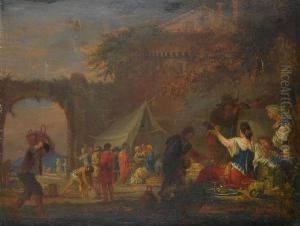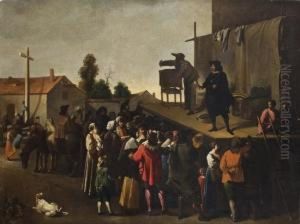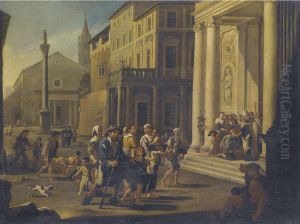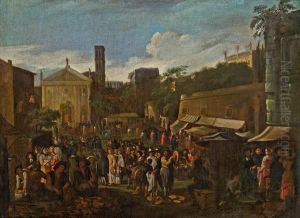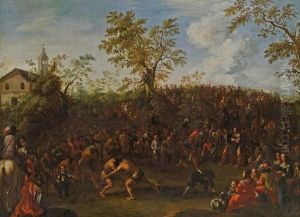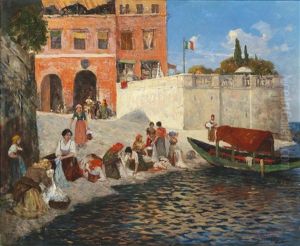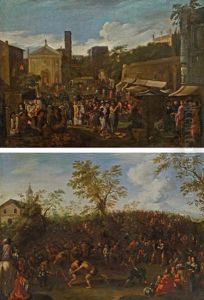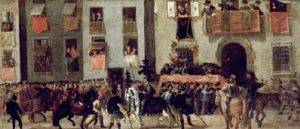Willem Reuter Paintings
Willem Reuter was a Flemish Baroque painter who was born in 1642 in Brussels, then part of the Spanish Netherlands. He is primarily known for his contributions to the genre of landscape painting. Not much is known about his early life or training, but it is believed that he may have been a pupil of a member of the Snyders or the Teniers, two prominent artistic families in Flanders at the time.
Reuter's paintings often depicted Italianate landscapes, a popular theme among Northern European artists of the 17th century who were inspired by the light and scenery of Italy. His works are characterized by warm colors, a skilled handling of light, and the inclusion of small figures to animate the scenes. It was common for artists of this period to never actually visit Italy but rather to derive inspiration from the work of other artists who had. However, it is not clear whether Reuter ever made the journey to Italy himself.
Although Reuter's career was relatively short, he made a notable contribution to the Flemish tradition of landscape painting. His works were appreciated for their decorative qualities and their ability to evoke the warmth and atmosphere of the Italian countryside. Unfortunately, Reuter died young, in 1681, in Brussels, and today his paintings can be found in various art collections, museums, and galleries around the world. His influence was modest in comparison to some of his contemporaries, but his landscapes still offer a glimpse into the enduring allure of the Italian landscape for Northern European artists of the Baroque era.
